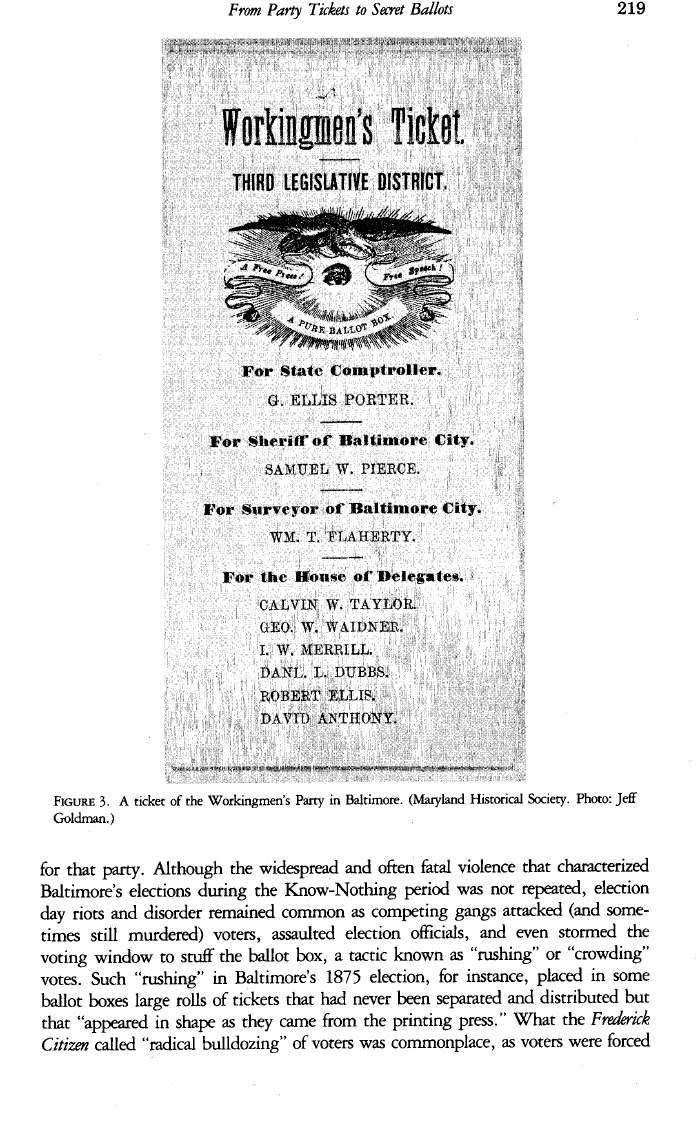|
From Party Tickets to Secret Ballots
For Sherilt' of Baltimore City.'
SAMUEL W. PIERCE.
j
A
w
For Surveyorjof Baltimore City.
For tie House of Delittee: J
'CALVIN W..TAYLt>R,,`
tI~C).~ ~V.;'~YAL~IN~It:
'L. W. MI;1i,RXLL.
I~3Ah'~T:'. L.::.I)U~B~ f '.
°
ROBERt
DAVTttl1NTI1O,~:V'Y:,
219
FIGURE 3. A ticket of the Workingmen's Party in Baltimore. (Maryland
Historical Society. Photo: Jeff
Goldman.)
for that party. Although the widespread and often fatal violence that
characterized
Baltimore's elections during the Know-Nothing period was not repeated,
election
day riots and disorder remained common as competing gangs attacked (and
some-
times still murdered) voters, assaulted election officials, and even
stormed the
voting window to stuff the ballot box, a tactic known as "rushing" or
"crowding"
votes. Such "rushing" in Baltimore's 1875 election, for instance, placed in
some
ballot boxes large rolls of tickets that had never been separated and
distributed but
that "appeared in shape as they came from the printing press." What the
Frederick
Citizen called "radical bulldozing" of voters was commonplace, as voters
were forced
|

